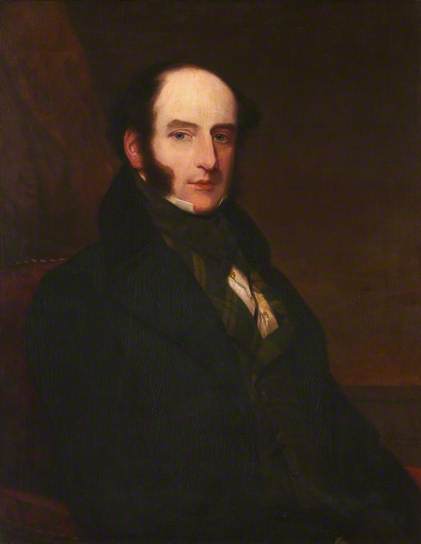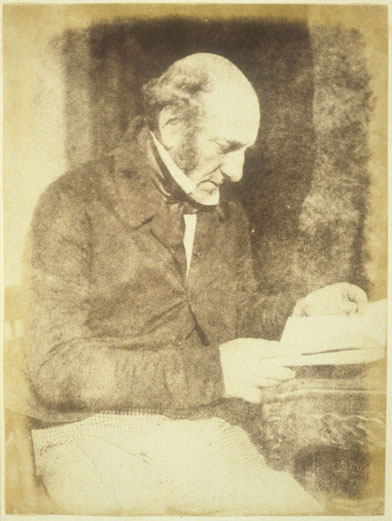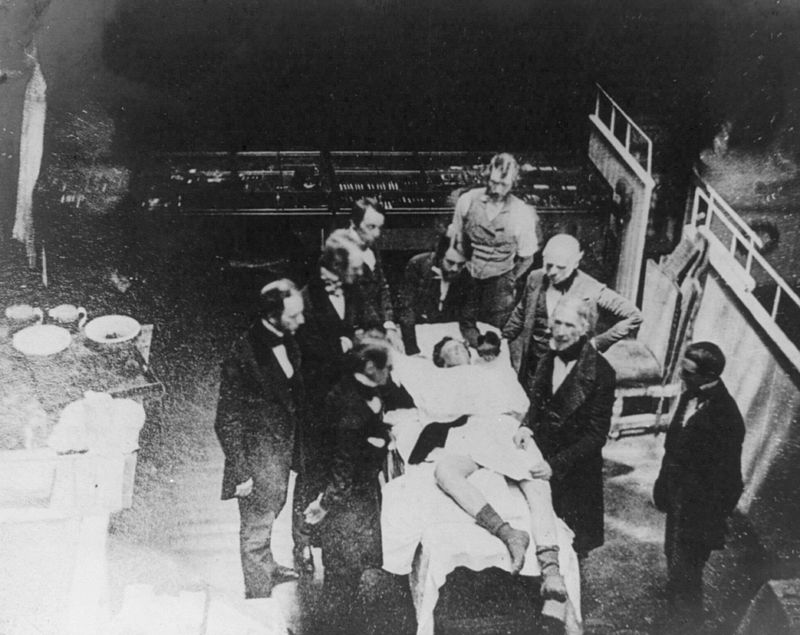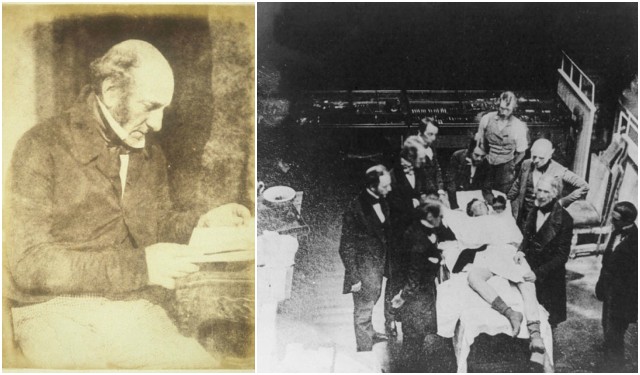Robert Liston was born on October 28th, 1794, in Ecclesmachan Scotland, to Henry Liston, a Scottish clergyman, and inventor. He was named after his grandfather, who served as the Moderator of the General Assembly of the Church of Scotland.
Liston studied medicine at the University of Edinburgh and became a surgeon at The Royal Infirmary of Edinburgh in 1818. He was particularly interested in anatomy and quickly built a reputation of a quick and skilled surgeon. He was an appointed lecturer of anatomy in Edinburgh but, after having numerous quarrels with his colleagues, he left Scotland and went to London.
Among his colleagues, he was known as a very pretentious and caustic person. His peers hated him and thus wanted him banned from the wards. Because of this Liston went to London where he became very famous.

Besides the fact that he was hated by his peers, Liston appeared to be really different with his patients. He was very compassionate and charitable to the poor, as well as tender towards the sick.
At that time anesthesia was unknown to medicine. Liston performed all his surgeries without anesthesia. That is why the speed was essential to minimize patients’ pain and improve their odds of surviving surgery. The surgeons who worked slower than Liston lost one in every four patients, whereas Liston lost one in every ten patients.
It was said that Liston was able to amputate a leg in just two minutes. He once removed a 45-pound scrotal tumor in 4 minutes. Legend has it that he could amputate a limb in 28 seconds. He started every operation with the calling “Time me gentlemen”, and the spectators who were standing in the galleries timed the whole procedure.

After announcing the start of the surgery, he begins to cut the leg, puts the bloody knife in his teeth in order to free his cutting hand, and then puts up a saw and cuts the bone. He finishes with sewing. He did all this within two and a half minutes.
Because of his speed, Liston was known as “The fastest knife in West End”. However, there were occasions when the surgeries went wrong because of the speed at which he attempted them.
One such case was an operation where Liston had to amputate a patient’s leg. It was supposed to be a routine operation but, it all went wrong when the patient started trashing around. The assistants tried hard to hold him but, he was too strong. In that chaos, Liston started to move so fast that he accidently cut his assistant’s fingers off and also slashed a spectator’s coat.
The spectator thought that he was hurt and died of terror on the spot. The patient and the assistant died a few days later from infections of their wounds.
This is the only surgery in known history with a 300 percent mortality rate.

Towards the end of his career, in 1846, Liston performed the first surgery where anesthesia was used. The patient was Frederick Churchill. After administering the anesthesia, he needed only 25 seconds to complete the amputation.
Unfortunately, Liston didn’t live to see the full potential of anesthetics. Only a year after Churchill’s surgery, Liston died in a sailing accident.
